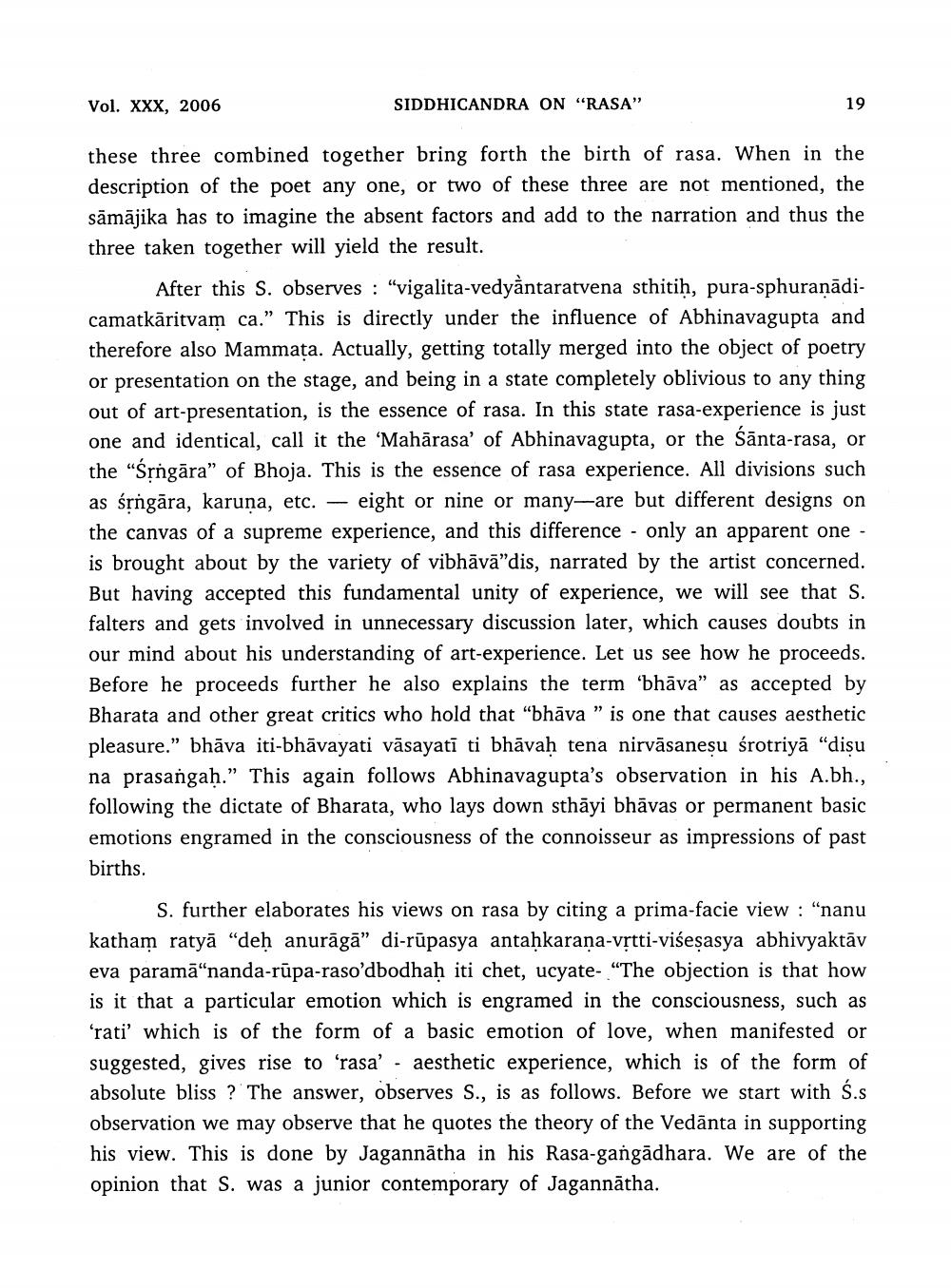________________
Vol. XXX, 2006
SIDDHICANDRA ON "RASA"
19
these three combined together bring forth the birth of rasa. When in the description of the poet any one, or two of these three are not mentioned, the sāmājika has to imagine the absent factors and add to the narration and thus the three taken together will yield the result.
After this S. observes : "vigalita-vedyằntaratvena sthitih, pura-sphuranādicamatkāritvam ca." This is directly under the influence of Abhinavagupta and therefore also Mammața. Actually, getting totally merged into the object of poetry or presentation on the stage, and being in a state completely oblivious to any thing out of art-presentation, is the essence of rasa. In this state rasa-experience is just one and identical, call it the ‘Mahārasa' of Abhinavagupta, or the Šānta-rasa, or the "Srngāra” of Bhoja. This is the essence of rasa experience. All divisions such as śrngāra, karuna, etc. – eight or nine or many—are but different designs on the canvas of a supreme experience, and this difference - only an apparent one - is brought about by the variety of vibhāvā"dis, narrated by the artist concerned. But having accepted this fundamental unity of experience, we will see that S. falters and gets involved in unnecessary discussion later, which causes doubts in our mind about his understanding of art-experience. Let us see how he proceeds. Before he proceeds further he also explains the term 'bhāva” as accepted by Bharata and other great critics who hold that “bhāva " is one that causes aesthetic pleasure.” bhāva iti-bhāvayati vāsayati ti bhāvah tena nirvāsanesu śrotriyā "disu na prasangah.” This again follows Abhinavagupta's observation in his A.bh., following the dictate of Bharata, who lays down sthāyi bhāvas or permanent basic emotions engramed in the consciousness of the connoisseur as impressions of past births.
S. further elaborates his views on rasa by citing a prima-facie view : "nanu katham ratyā “deḥ anurāgā” di-rūpasya antahkarana-vrtti-višeşasya abhivyaktāv eva paramā“nanda-rūpa-raso'dbodhah iti chet, ucyate- "The objection is that how is it that a particular emotion which is engramed in the consciousness, such as ʻrati' which is of the form of a basic emotion of love, when manifested or suggested, gives rise to 'rasa' - aesthetic experience, which is of the form of absolute bliss ? The answer, observes S., is as follows. Before we start with ś.s observation we may observe that he quotes the theory of the Vedānta in supporting his view. This is done by Jagannātha in his Rasa-gangādhara. We are of the opinion that S. was a junior contemporary of Jagannātha.




